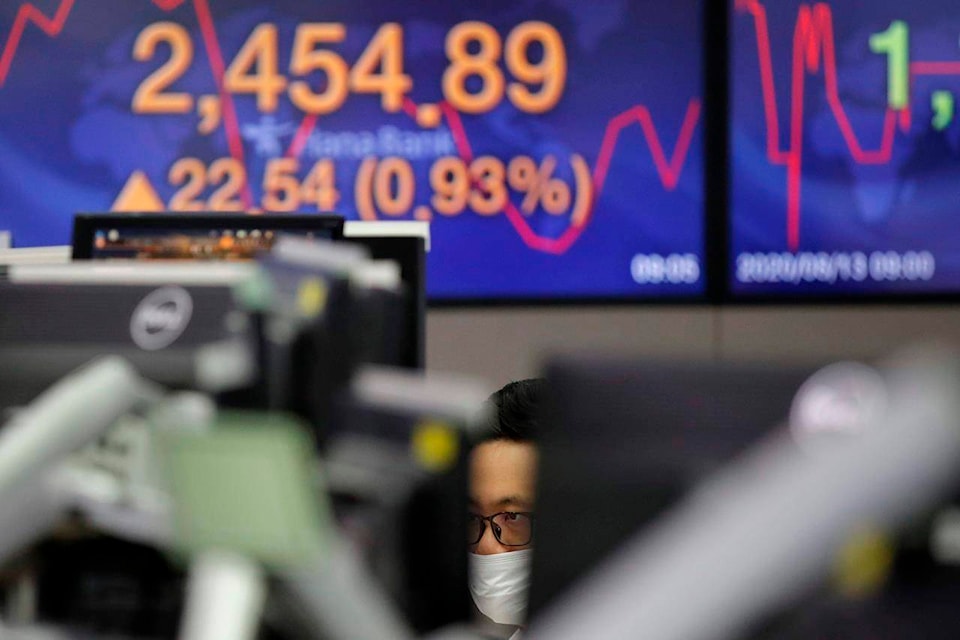NEW YORK — Stocks are opening mostly lower on Wall Street Thursday a day after the S&P 500 closed just below its pre-pandemic record high. The index was down 0.1% in the early going. Cisco, which makes routers and other network hardware, fell the most in the S&P 500 after predicting results for its current quarter that were weaker than analysts were expecting. Lyft also fell after reporting a steep drop in ridership and revenue. Markets got some less-bad news on the jobs front as the number of laid-off workers applying for unemployment benefits fell below 1 million last week for the first time since March.
THIS IS A BREAKING NEWS UPDATE. AP’s earlier story appears below.
Global stocks mostly fell on Thursday ahead of a weekly U.S. unemployment report that is expected to show that layoffs remained stuck at a high level since the viral pandemic erupted five months ago.
Jobless claims have been totalling about 16 million lately, with weekly numbers of people seeking unemployment checks growing to levels unseen since the Great Depression of the 1930s. Though the rate of applications for unemployment benefits has reached its lowest point since March, it has exceeded 1 million for 20 straight weeks — well above the record high that predated the pandemic.
On Wall Street, futures for the Dow and S&P 500 were both down 0.1%. In Europe, France’s CAC 40 shed 0.2% to 5,060, while Germany’s DAX dipped 0.2% to 13,030. Britain’s FTSE 100 lost 1% to 6,216 after some stocks began trading post-dividend.
Hayaki Narita at Mizuho Bank in Singapore warned against excess optimism about the U.S. economy, despite moderating numbers of new coronavirus cases and progress toward development of a vaccine that might help restore normality in a world encumbered by quarantine restrictions and fear of contagion.
“Encouraging signs of U.S. COVID curve flattening alongside vaccine hopes are reason for cautious optimism, not unbridled exuberance,” he said.
In Asian trading, Japan’s benchmark Nikkei 225 jumped 1.8% to finish at 23,249.61. South Korea’s Kospi gained 0.2% to 2,437.53. Hong Kong’s Hang Seng was little changed, slipping less than 0.1% to 25,224.93, while the Shanghai Composite index gained less than 2 points, to 3,320.73.
Australia’s S&P/ASX 200 lost 0.7% to 6,091.00, despite better than expected unemployment data for July. The number of jobs added was more than forecast and the unemployment rate was 7.5%.
“So while this employment report is a broadly positive piece of economic data, the Australian labour market is still under severe stress following the COVID-19 pandemic,” said Robert Carnell, regional head of research for Asia-Pacific at ING.
Trade tensions between the U.S. and China are adding to uncertainties, with officials from both sides due to hold a virtual meeting Friday to discuss progress on a deal reached in January that brought a truce in a tariff war.
In other trading, benchmark U.S. crude slipped 2 cents to $42.65 a barrel in electronic trading on the New York Mercantile Exchange. It rose $1.06 to $42.67 a barrel on Wednesday. Brent crude oil fell 10 cents to $45.33 a barrel.
The dollar rose to 106.97 Japanese yen from 106.89 yen. The euro rose to $1.1837 from $1.1764.
The Associated Press
